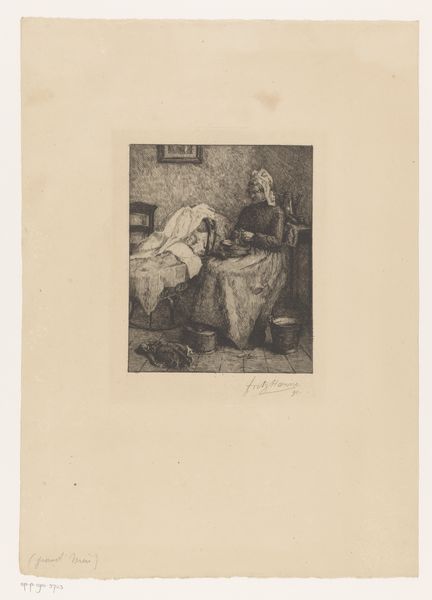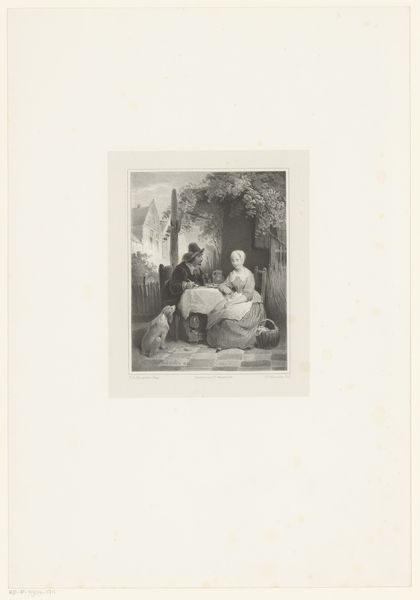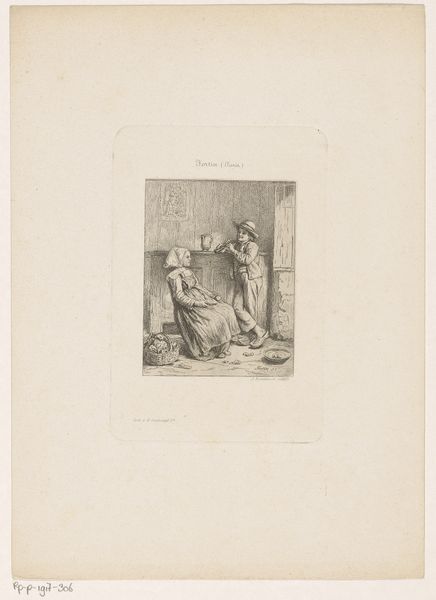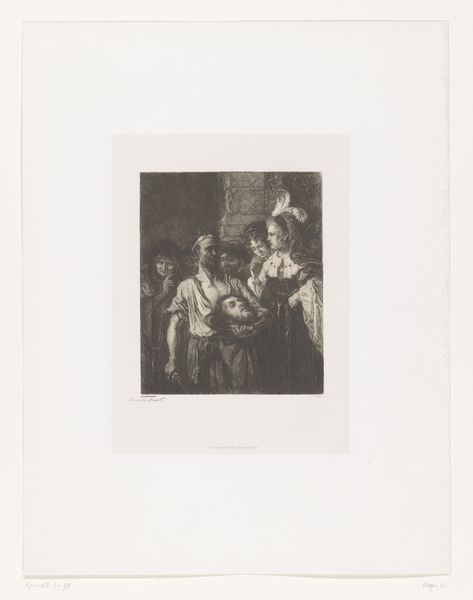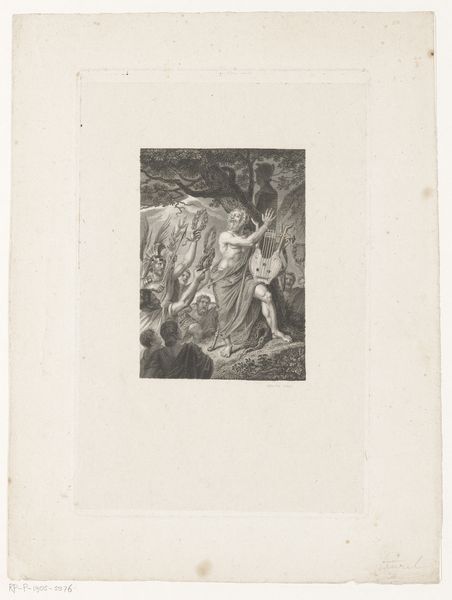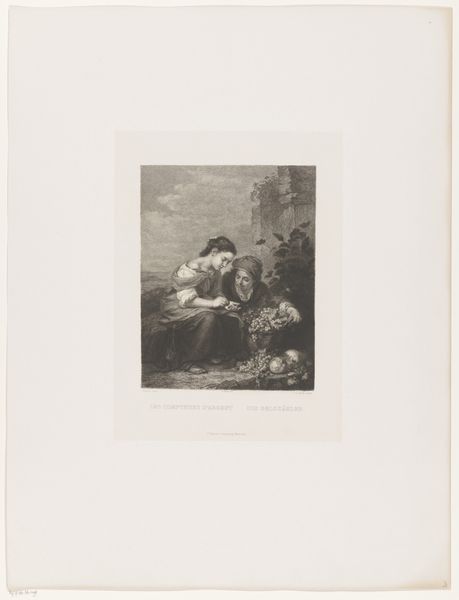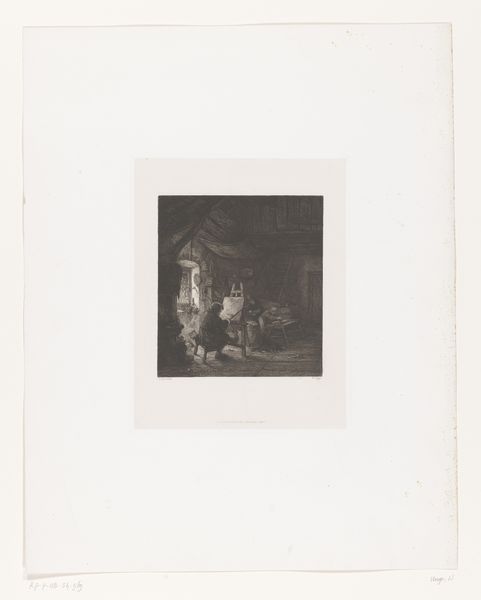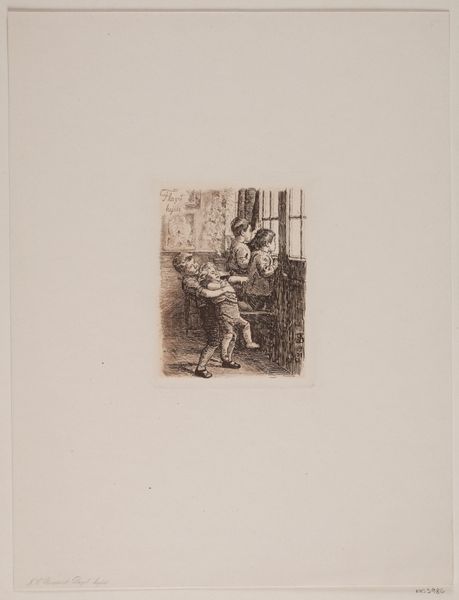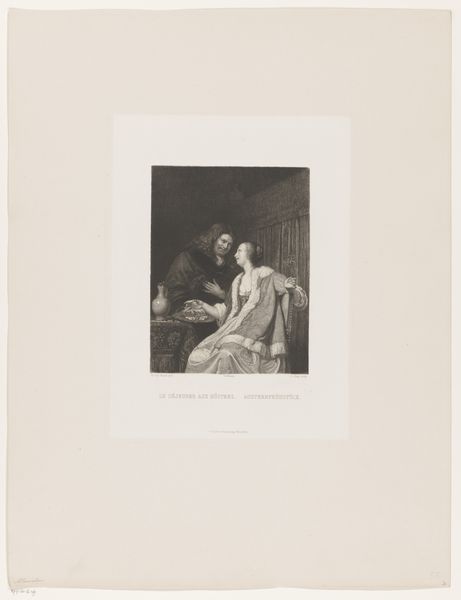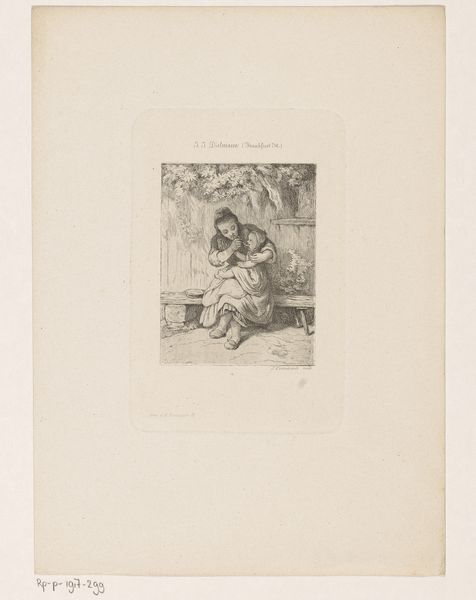
print, engraving
#
pencil drawn
# print
#
pencil sketch
#
figuration
#
pencil drawing
#
history-painting
#
academic-art
#
engraving
#
realism
Dimensions: height 305 mm, width 251 mm
Copyright: Rijks Museum: Open Domain
Editor: So, this is "De heilige Amélie" by Paolo Mercuri, created in 1837. It's a print made using engraving techniques. There’s something about the scene that feels… staged? What do you see in this piece? Curator: Immediately, I'm drawn to the staging and the overt display of power, especially given that it represents a saint. What does it mean to depict religious piety through the lens of royalty and privilege? It really speaks to the complicated intersection of faith, power, and gender in 19th-century Europe. Editor: That’s interesting. I hadn’t thought of it that way. The focus felt more on the idealized presentation. Is that a fair assessment given academic art's prevalence at that time? Curator: Absolutely. But isn't the *ideal* itself a reflection of power structures? Mercuri situates Amélie within very specific, idealized constraints. Who gets canonized, how are they depicted? Consider, too, that these prints were often circulated widely. How might an image like this have functioned in shaping perceptions of female holiness and, by extension, female roles within society? What assumptions does the artist make about the viewer? Editor: I see your point. It definitely presents a very narrow view, doesn’t it? All the figures are white, royal… Curator: Exactly. The composition reinforces this exclusivity. The gazes of the women around Amélie frame and celebrate the figure at the centre, reinforcing not only her importance, but also what kind of virtue is valuable and deemed "holy". And who controls that narrative? Editor: That makes me think about who was *excluded* from these kinds of depictions and narratives. Thanks, that’s really helpful! Curator: It’s a reminder that art, even seemingly straightforward religious scenes, is always entangled with larger social and political dynamics. It makes you consider how the dominant ideologies and values influenced artists, commissioners, and audiences, and shapes meaning.
Comments
No comments
Be the first to comment and join the conversation on the ultimate creative platform.
